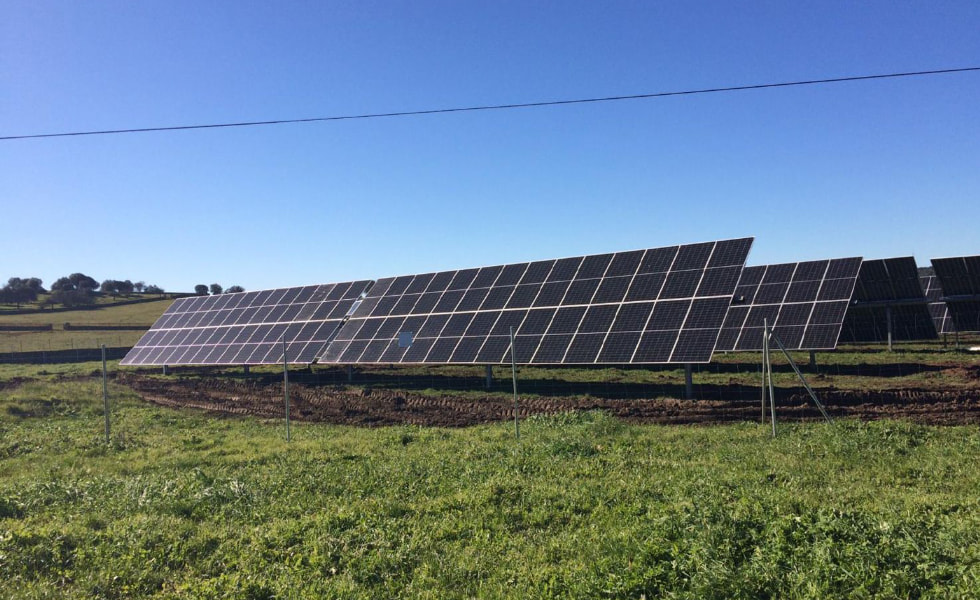
As environmental issues have come to the forefront of the agenda for the British government, the ways in which renewable energy can be harnessed are also coming under closer scrutiny.
When it comes to solar power, the idea of placing solar panels on agricultural land is being examined, tried and tested. But is it really a feasible experiment? Can we really rely on agricultural land for solar farms without harming the environment? And are there any benefits for farmers?
Placing solar panels on agricultural land
To begin with, combining the power of the sun and agricultural land is nothing new. Farmers have used energy from the sun for their work since the beginning of time, and indeed agriculture depends on weather systems and the movements of the sun.
Solar farms on farmland are simply putting the sun’s power to another use, for the needs of modern mankind and the wellbeing of the planet.
So what is a solar farm?
A solar farm is an array of solar panels set up on agricultural land, using maximum exposure to the sun, over large surface areas, for the production of electrical energy.
Benefits of using solar panels on agricultural land
The benefits of using solar panels on agricultural land can be manifold for energy consumers, the biggest beneficiaries may be farmers and agricultural customers.
Some of the benefits of solar panels include:
• Reduced dependence on the National Grid for energy supply and fluctuating energy prices
• Saving money – solar power is less expensive than grid power on a percentage basis
• Solar panels add value to farmland
• Solar panels are durable, last for decades, and are fairly low-maintenance
• Solar panels normally pay for themselves within a few years of installation
• Farmers can claim capital allowances for solar panels as they are classed as ‘plant and machinery’
Rooftop solar panels can also be used on large farm buildings, utilising space that would otherwise have been wasted while agricultural land remains agricultural.
It’s estimated that solar farms in the UK currently have a combined capacity of around 14GW, and around 9.6GW of this capacity comes from ground-mounted solar panels.
Around six acres of land is required for every megawatt (MW) of power (though this will be reduced to around 2-4 acres in future), which means that the solar panels on agricultural land in the UK as it stands makes up just under 0.1% of land in Britain. The UK government has pledged to bring this up to just 0.3% by 2035 in order to meet its net-zero target.
Even with all this investment in solar panel farms, the land being used would still only take up roughly 0.5% of the land currently used for farming – and about half of the space taken up by golf courses in the UK.
Do solar farms put agricultural land at risk?
Solar panel farms generally have the blessing of the agricultural industry. Renewable energy production is supported by the National Farmers Union and forms part of their net-zero plan.
La tierra agrícola se selecciona cuidadosamente para fines solares. Al elegir el terreno que se utilizará para los paneles solares, hay cosas que se deben considerar; la mejor manera de conectar el sistema a la red y qué campos producen menores rendimientos y, por lo tanto, están infrautilizados.
Muchos agricultores le dirán que las granjas de paneles solares de 550W no ponen en riesgo su tierra. Son, de hecho, positivos acerca de la tecnología solar, ya que pueden usar su tierra para dos propósitos: generación de energía y producción de alimentos.
En este último punto, muchos agricultores de paneles solares han notado que su granja ahora es más productiva que antes. La tierra previamente redundante o infrautilizada se puede utilizar para la ganadería y la agricultura al mismo tiempo que se utiliza como una granja solar.
Además, plantar una mezcla biodiversa de flora nativa alrededor y debajo de los paneles solares también podría ayudar a fijar el carbono en el suelo, lo que podría significar producir alimentos y generar energía al mismo tiempo.
Un estudio de 2018 en los EE. UU. descubrió que las hierbas de pastoreo crecían mejor a la sombra de los paneles solares, con "ganancias dramáticas en la productividad", proporcionando un 90 % más de biomasa en el verano, ya que las áreas debajo de los paneles solares se volvieron un 328 % más eficientes en el uso del agua.
Una prueba de cuatro años en Australia también reveló una mejora en la calidad y cantidad de lana de oveja donde las granjas habían instalado paneles solares. Esto se debió a que los paneles proporcionaron refugio para las ovejas y pasto de mejor calidad.
La calidad del pasto mejora porque los paneles fotovoltaicos brindan sombra y retención de agua, lo que protege a las plantas más delicadas.
Mirando más lejos, Japón es líder mundial en instalaciones agrovoltaicas, con 2000 instaladas y más de 120 cultivos diferentes cultivados debajo de los paneles.
Teniendo todo en cuenta, se puede decir que el uso de paneles solares en tierras agrícolas tiene muchos beneficios no solo para el medio ambiente, sino también para los agricultores, la vida silvestre y las comunidades circundantes.
